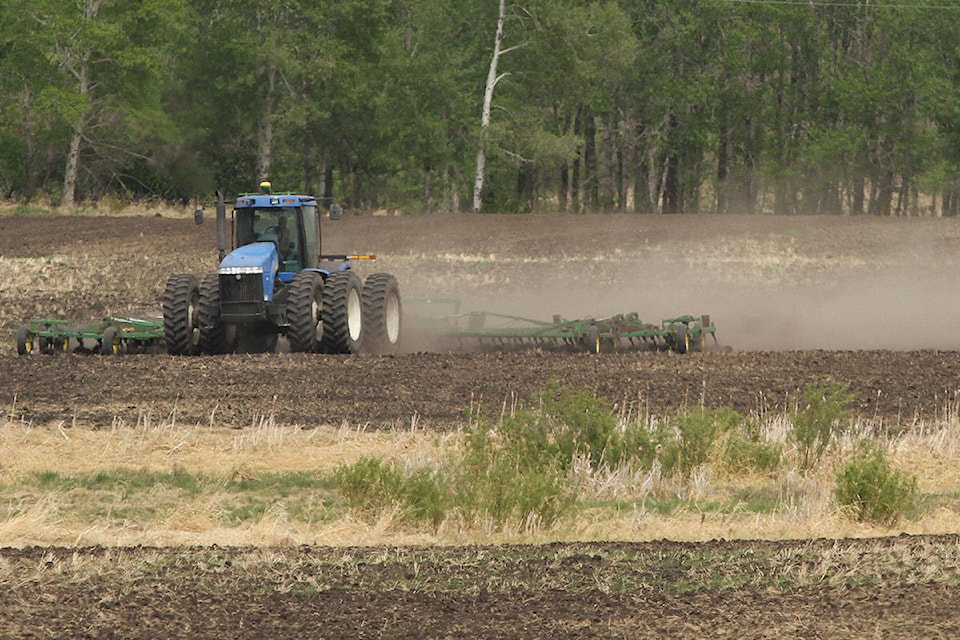A late start to seeding doesn’t faze one Central Alberta farmer.
Terry Young, who farms east of Red Deer, said two years ago an early spring meant seeding early and hopes of a good season that was largely undone by a snowy October.
“In 2016, we had a beautiful spring,” said Young. “We were mowing the lawn in the middle of April. That year we never turned a wheel of harvest in October. It pretty well snowed all month.
“Even though we’re getting a bad start this time around, it might finish up really well.”
According to Alberta agriculture and forestry’s soil moisture mapping, Central Alberta’s soil is pretty wet. For pastures, the plant available depth is between 55 to 70 mm near Red Deer and more than 70 mm west of the city. For spring wheat is ranges from 60 to 80 mm near Red Deer and increases to 80-100 mm west of the city.
Though soil moisture might be good for some farmers this spring, Young said the ground is still frozen in places which leads to the thawing snow to run off.
Harry Brook, Alberta Agriculture Crop Specialist, said that much of the moisture from the snow in the fields ran off due to frozen topsoil.
“We had snow in November, but we had those warm spells that melted it and then froze and sealed up the soil surface,” said Brook. “Until the topsoil defrosts, the moisture won’t get very far down.”
But the runoff will help fill sloughs and dugouts.
“Late seeding is not a problem until you know when the first killing frost is,” said Brook. “Part of the problem is, over the last three years, we’ve had really early springs. And we have such terrible memories when it comes to weather.
“Last year was an early spring, but a lot of guys had to harvest first, before they could even start seeding. So they were seeding late as well.”
Brook expects most seeding will begin by early May, which he said isn’t unusual but isn’t a “pleasant place to be.”
“Weather isn’t normal. Weather changes,” said Brook. “The real question now is, other than when is the first killing front, are we going to get interruptions during the seeding season.”
He said a rain or snow storm could stop seeding for some farmers for about a week.
The late start hasn’t affected Young’s plans for what he will plant this year.
“I’m still going to plant some wheat, I’m still going to plant some canola and I’m going to plant some barley,” said Young. “I haven’t contemplated changing.”
mcrawford@reddeeradvocate.com
Like us on Facebook and follow us on Twitter
